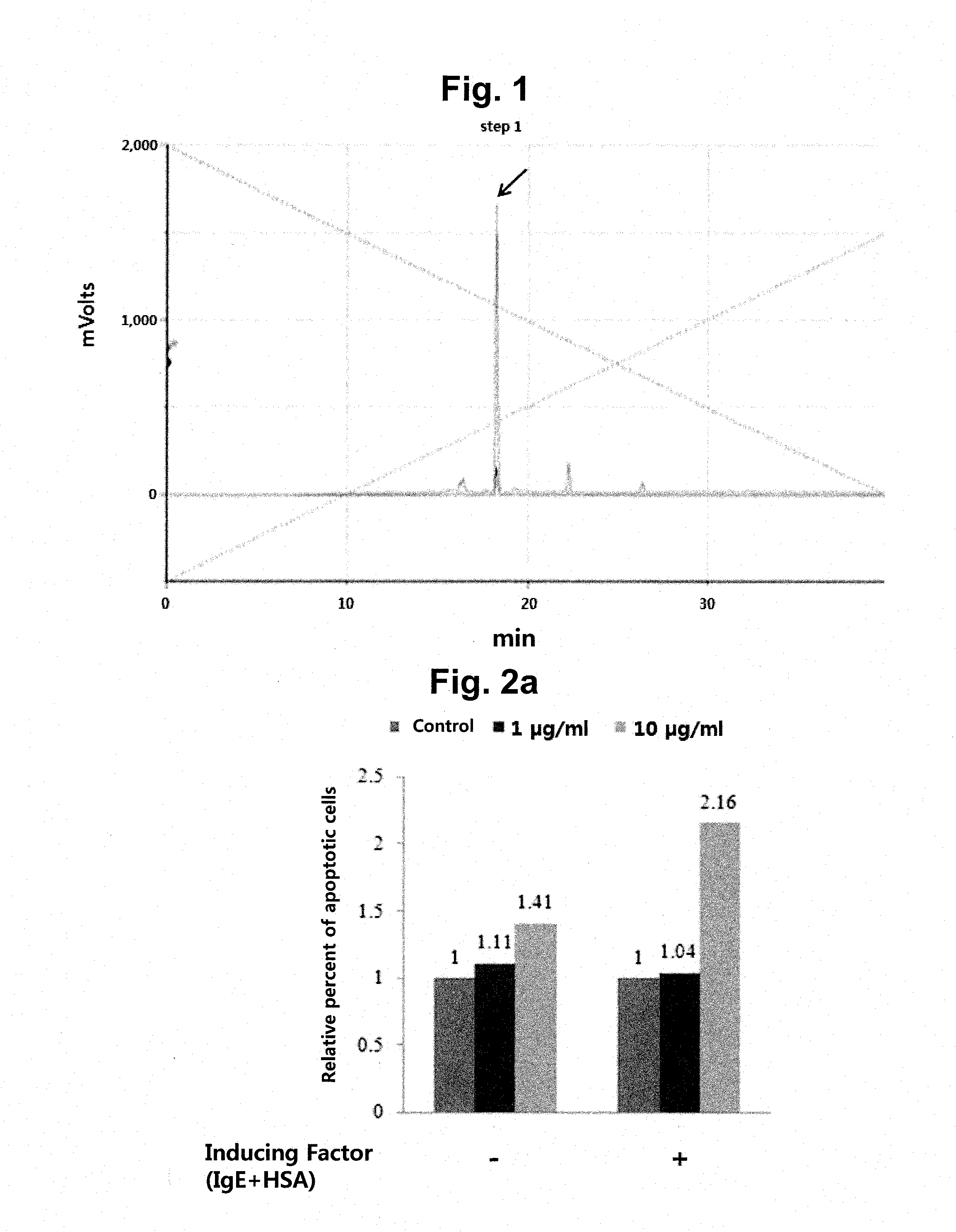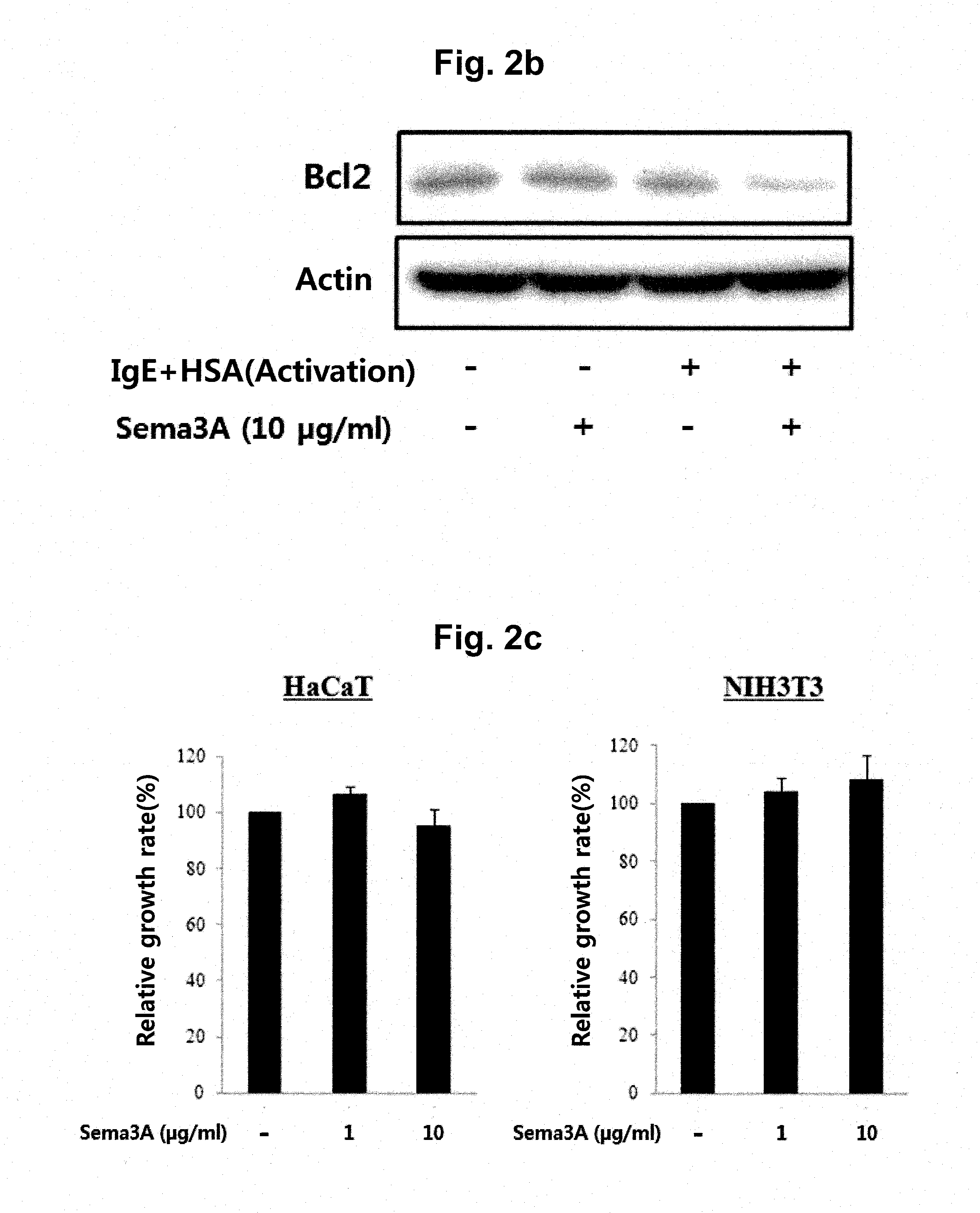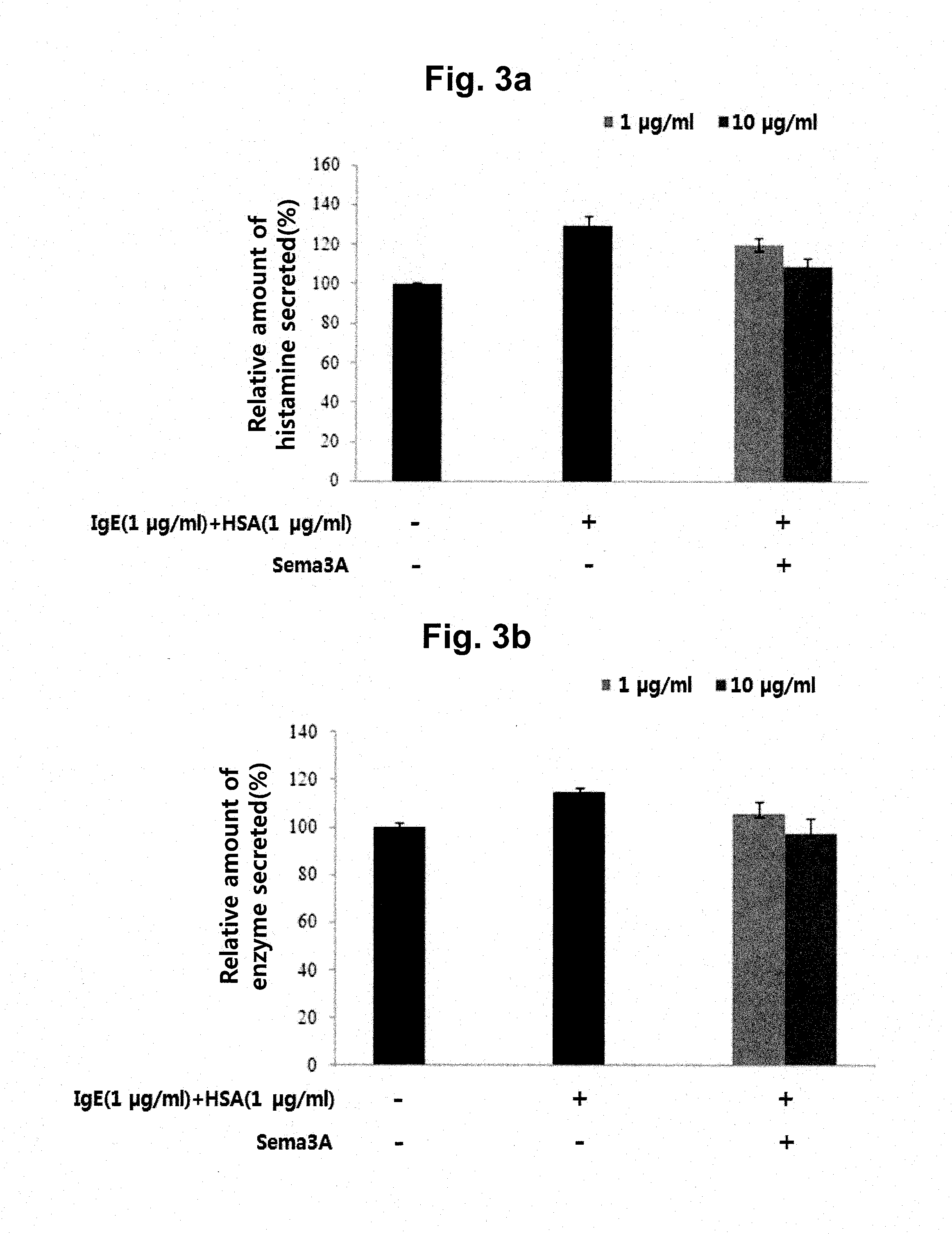Peptide for inducing mast cell-specific apoptosis and use thereof
a mast cell and apoptosis technology, applied in the field of peptides for inducing mast cell specific apoptosis, can solve the problems of insomnia, side effects, insomnia, anxiety, etc., and achieve the effects of reducing the amount of histamine secreted, excellent skin penetration, and inhibiting the activity of mast cells
- Summary
- Abstract
- Description
- Claims
- Application Information
AI Technical Summary
Benefits of technology
Problems solved by technology
Method used
Image
Examples
preparation example 1
Synthesis of Trp-Val-Pro-Tyr-Gln-Ala-Arg-Val-Pro-Tyr-Pro-Arg (SEQ ID NO:1)
[0090]700 mg of chloro trityl chloride resin (CTL resin, Nova Biochem Cat No. 01-64-0021) were introduced into a reactor, to which 10 ml of methylene chloride (MC) were added, followed by agitation for 3 min. After removing solution, 10 ml of dimethylformamide (DMF) were added to the resultant and then agitation was carried out for 3 min, after which the solvent was removed. 10 ml of dichloromethane solution were added to the reactor and 200 mmole of Fmoc-Arg(pbf)-OH (Bachem, Swiss) and 400 mmole of DIEA (N,N′-diisopropyl ethylamine) were then added to the reactor, after which the mixture was dissolved by agitation and reaction was then undertaken with agitating for 1 hr. After washing, methanol and DIEA (2:1) dissolved in DCM (dichloromethane) were reacted with the resin for 10 min, and then the resultant was washed using excess of DCM / DMF (1:1). After removing the solution, 10 ml of DMF were added to the res...
example 1
Preparation of Nano Peptides
[0107]50 mg of peptide synthesized in preparation Examples was dissolved in 500 ml of distilled water by sufficient agitation. The peptide solution was mixed with 5 g lecithin, 0.3 ml sodium oleate, 50 ml ethanol and a small amount of oils, and its volume was adjusted with distilled water to 1 L. The resulting solution was subjected to a microfluidizer under high pressure for emulsification, thereby providing nanosomes having about 100-nm size. The nanosomes were prepared to have a final concentration of about 50 ppm and used as ingredients for cosmetics.
formulation example 1
Skin Softener
[0108]A skin softener comprising peptide-containing nanosomes prepared in Example 1 was formulated according to the following composition:
TABLE 2IngredientsContent (wt %)Peptide nanosome0.0011,3-butylene glycol6.0Glycerin4.0PEG 15001.0Sodium hyaluronate1.0Polysorbate 200.5Ethanol8.0Preservative, pigmentProper amountBenzophenone-90.05PerfumeMinute amountDistilled waterResidual amountTotal100
PUM
| Property | Measurement | Unit |
|---|---|---|
| Current | aaaaa | aaaaa |
| Size | aaaaa | aaaaa |
| Stability | aaaaa | aaaaa |
Abstract
Description
Claims
Application Information
 Login to View More
Login to View More - R&D
- Intellectual Property
- Life Sciences
- Materials
- Tech Scout
- Unparalleled Data Quality
- Higher Quality Content
- 60% Fewer Hallucinations
Browse by: Latest US Patents, China's latest patents, Technical Efficacy Thesaurus, Application Domain, Technology Topic, Popular Technical Reports.
© 2025 PatSnap. All rights reserved.Legal|Privacy policy|Modern Slavery Act Transparency Statement|Sitemap|About US| Contact US: help@patsnap.com



